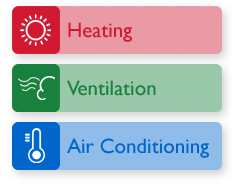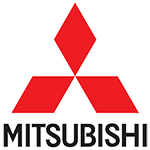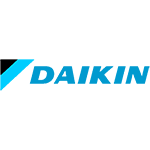Important new safety standards for 2017

With the new administration in place, HVAC contractors across the country are awaiting to see how it will influence their work. The administration has repeatedly said that it intends to stop or withdraw some of the legislation which was set in motion during the previous mandate. And while it has made good on some of its promises — such as pulling the so-called 'blacklisting rule' — its standing on other rules currently remains unclear. But even without the administration passing much new legislation concerning contractors, there are already a number of HVAC regulations that contractors need to keep in mind this year. Some have already went into effect while others will be rolling out soon. Below is a list of four regulations contractors should be aware of:
1. SNAP Refrigerants
Regulation Last year the requirements for handling ozone-depleting substances (ODSs) in Section 608 of the Clean Air Act were revised. As of January 1, 2017, technicians, operators, and owners of refrigeration equipment have been asked to comply with new rules. These revisions have extended the already applicable requirements for handling ODSs such as chlorofluorocarbons (CFCs) and hydrochlorofluorocarbons (HCFCs) in air conditioning and refrigeration equipment to include substitutes such as hydrofluorocarbons (HFCs). In terms of sales of such substances: As of January 1, 2017, recovered ODSs and substitute refrigerants can only be resold to certified reclaimers of such substances As of January 1, 2018, recovered ODSs and substitutes can only be sold to certified technicians With that, technicians will now also be required to treat and dispose HFCs in the same way they have had to treat ODSs. And as of January 1, 2018, technicians will also be required to: Pass a certification exam that will allow them to handle ODSs and substitute refrigerants Keep a copy of their certificate at their place of business at all times (as well as retain a copy up to 3 years after ceasing to operate as a technician) Keep precise records when disposing of appliances that contain between 5 and 50 pounds of refrigerant Evacuate ODSs and substitutes to new levels when opening or disposing of appliance with certified equipment And as of 2019, technicians will need to perform quarterly or annual leak inspections on equipment that has exceeded the new threshold leak rate. The new leak rate for such equipment has been determined to be: 30 percent for industrial process refrigeration (IPR; over 500 pounds) 20 percent for commercial refrigeration equipment (50-500 pounds) 10percent for comfort cooling equipment (50 pounds or more) On top of that, HVAC contractors and technicians should also watch out for the revised exam questions and requirements of Section 608 which the EPA is supposed to publish very soon. These will define what certified professionals need to know about ODSs going forward.
2. Rooftop Units
Regulation Beginning 2018, HVAC manufacturers and other professionals who work with commercial air conditioners and heat pumps and commercial warm-air furnaces will need to comply with new efficiency requirements as well. According to the new efficiency standards adopted by the Department of Energy (DOE), as of January 2018, the minimum efficiency of new rooftop air conditioners on low-rise buildings will need to increase by 10 percent in comparison to current standards. And as of 2023, that efficiency will need to increase up to 25-30 percent. New warm-air furnaces will also see a change in their efficiency standards, starting 2023.
3. Residential Central Air Conditioners and Heat Pumps
Regulation On May 26, the DOE also provided notice of the adoption of the new energy conservation standards for residential central air conditioners and heat pumps. During the preceding months, the DOE received comments regarding the new standards but found that they did not provide a reasonable basis to withdraw the new standards. The new regulations includes standards for seasonal energy efficiency ratio (SEER), heating seasonal performance factor (HSPF), and energy efficiency ratio (EER) of air conditioners and heat pumps. As with previous regulations, the DOE has retained the division of the country into three regions (North, South, and Southwest), with different standards applying to each region. The DOE is yet to announce the test procedures which it will follow in establishing the efficiency of central air conditioners and heat pumps. It is expected that it will publish the final rule on these procedures by July 3, 2017.
4. OSHA Walking-Working Surfaces and Fall Protection Standards
Тhe new OSHA fall protection standards are another piece of legislation that contractors must comply with as of January 17, 2017. The new standards are designed to allow for greater flexibility to employers in choosing a fall protection system. Employers can choose from a guardrail system, safety net system, personal fall arrest system, positioning system, travel restraint system, or ladder safety system. Further provisions with delayed effective dates that employers need to comply with include: Inspecting and certifying permanent anchorages for rope descent systems (November 20, 2017); Installing personal fall arrest or ladder safety systems on new fixed ladders over 24 feet and on replacement ladders/ladder sections, including fixed ladders on outdoor advertising structures (November 19, 2018); Ensuring existing fixed ladders over 24 feet, including those on outdoor advertising structures, are equipped with a cage, well, personal fall arrest system, or ladder safety system (November 19, 2018); and Replacing cages and wells (used as fall protection) with ladder safety or personal fall arrest systems on all fixed ladders over 24 feet (November 18, 2036).


